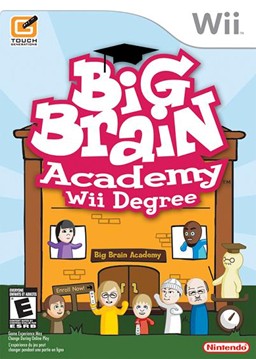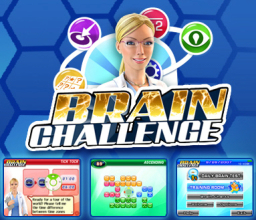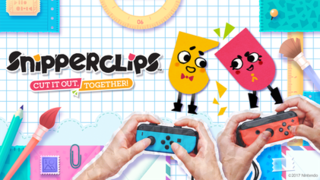
Dr. Mario is a 1990 puzzle video game developed and published by Nintendo for the Nintendo Entertainment System, Famicom, and Game Boy. It was produced by Gunpei Yokoi and designed by Takahiro Harada. The soundtrack was composed by Hirokazu Tanaka.

A game controller, gaming controller, or simply controller, is an input device or input/output device used with video games or entertainment systems to provide input to a video game. Input devices that have been classified as game controllers include keyboards, mice, gamepads, and joysticks, as well as special purpose devices, such as steering wheels for driving games and light guns for shooting games. Controllers designs have evolved to include directional pads, multiple buttons, analog sticks, joysticks, motion detection, touch screens and a plethora of other features.

Dr. Robotnik's Mean Bean Machine is a falling block puzzle game developed by Compile and published by Sega. It was released for the Sega Genesis / Mega Drive in North America and Europe in November 1993, and ported to the Game Gear in 1993 and Master System in 1994.

Brain Age: Train Your Brain in Minutes a Day!, known as Dr. Kawashima's Brain Training: How Old Is Your Brain? in PAL regions, is an edutainment puzzle video game. It was developed and published by Nintendo for the Nintendo DS. Nintendo has stated that it is an entertainment product inspired by Tohoku University professor Ryuta Kawashima's work in the neurosciences.
Ryuta Kawashima is a Japanese neuroscientist known for his appearances in the Brain Age series of video games for the Nintendo DS, Nintendo 3DS and Nintendo Switch.

Brain Age 2: More Training in Minutes a Day!, known as More Brain Training from Dr Kawashima: How Old Is Your Brain? in PAL regions, is an edutainment puzzle game and the sequel to Brain Age: Train Your Brain in Minutes a Day! (2005). It was developed and published by Nintendo for the Nintendo DS handheld game console. Before the game begins, the player must perform a Brain Age Check to determine their brain age, which ranges from 20 to 80, to determine approximately their brain's responsiveness. A brain age of 20, the lowest age that the player can achieve, indicates that the player's brain is as responsive as that of an average 20-year-old. After the player is told their initial brain age, they can complete a series of minigames to help improve their brain's responsiveness, after which they can run Brain Age Check again to determine their updated brain age.

Big Brain Academy: Wii Degree, known in PAL regions as Big Brain Academy for Wii, is a video game released for the Wii. A sequel to the game Big Brain Academy for the Nintendo DS, it too measures a player's brain's weight, but with new games and puzzles to solve. The game makes use of Miis and uses WiiConnect24 features, allowing competition amongst users' friends, whose codes are automatically imported from the Wii's internal address book.
Minna de Kitaeru Zenno Training is an arcade game released only in Japan by Namco Bandai Games on December 21, 2006.

Flash Focus: Vision Training in Minutes a Day is a Touch! Generations puzzle video game developed by Namco Bandai and Nintendo SPD and published by Nintendo for the Nintendo DS handheld video game console. It was released in Japan on May 31, 2007 as Miru Chikara wo Jissen de Kitaeru: DS Medikara Training and released in North America on October 15.

Brain Challenge is a mental exercise video game, featuring "brain exercise puzzles". The game was developed by Gameloft Beijing for mobile phone and iPod and released on September 5, 2007. In 2008 was followed by a Nintendo DS version on January 8, an Xbox Live Arcade release on March 12, and a PlayStation 3 launch on November 27. The N-Gage 2.0 version was released on the day of the service's launch, April 3, 2008. A version for WiiWare was released in autumn 2008 on all three regions. The Wii version also uses Miis for the players profile. OnLive also had launched their new streaming game platform with Brain Challenge on July 27, 2010. The game was released for Mac OS X in January 2011.

Brain Age Express are three educational puzzle video games developed by Nintendo for the Nintendo DSi's DSiWare download service. They are the third series of games in the Brain Age series, and are repackaged versions of both Brain Age: Train Your Brain in Minutes a Day! and Brain Age 2: More Training in Minutes a Day! games, featuring both old and new puzzles.
Brain Age, known as Dr Kawashima's Brain Training in PAL regions, is a series of video games developed and published by Nintendo, based on the work of Ryuta Kawashima.
indieszero Corporation, Ltd. is a small video game development company headquartered in Musashino, Tokyo, Japan. It was founded on April 21, 1997, and has developed video games for other video game companies, including Nintendo, SEGA, and Square Enix.

Brain Exercise with Dr. Kawashima is a brain training game developed by Namco Bandai and tested by Dr. Kawashima, known for his Nintendo DS games Brain Age: Train Your Brain in Minutes a Day! and Brain Age 2: More Training in Minutes a Day!.

Body and Brain Connection, also known as Dr. Kawashima's Body and Brain Exercises in PAL regions, is a puzzle video game developed and published by Namco Bandai Games for the Xbox 360's Kinect platform. It was released in Japan on November 20, 2010, in North America on February 8, 2011, and in Europe on February 11, 2011.

Brain Age: Concentration Training, known in Europe and Australia as Dr Kawashima's Devilish Brain Training: Can you stay focused?, is an educational puzzle video game developed and published by Nintendo. It is the fourth major entry in the Brain Age series and the first made specifically for the Nintendo 3DS. It was released in Japan on July 28, 2012, in North America on February 10, 2013, and in South Korea on September 5, 2013. It later came to Europe on July 28, 2017, and Australia on July 29, 2017, five years apart from the initial release. Dr. Kawashima presents the game's purpose as being to counter prevalent subpar concentration skills onset by social media and other aspects of modern life.

Snipperclips: Cut It Out, Together! is a puzzle video game developed by SFB Games and published by Nintendo for the Nintendo Switch. The game was released worldwide as a launch title for the Nintendo Switch on March 3, 2017. An expanded version, titled Snipperclips Plus, was released on November 10, 2017. In the game, the players have a "snipping" mechanic where they can cut the other player into a different shape, which is used to solve the various puzzles.

Pokémon Café ReMix is a free-to-play puzzle video game developed by Genius Sonority for the Nintendo Switch, Android and iOS. The game was released on June 23, 2020, in North America, and on June 24, 2020, in Japan, Europe and Australia.

Big Brain Academy is a series of puzzle video games developed and published by Nintendo. Similar to the Brain Age series, each game features a number of activities designed to test, measure, and improve the player's mental skills. The first two games were released under the Touch! Generations brand, which has since been discontinued.
















